Paul Begala’s Letters from Egypt
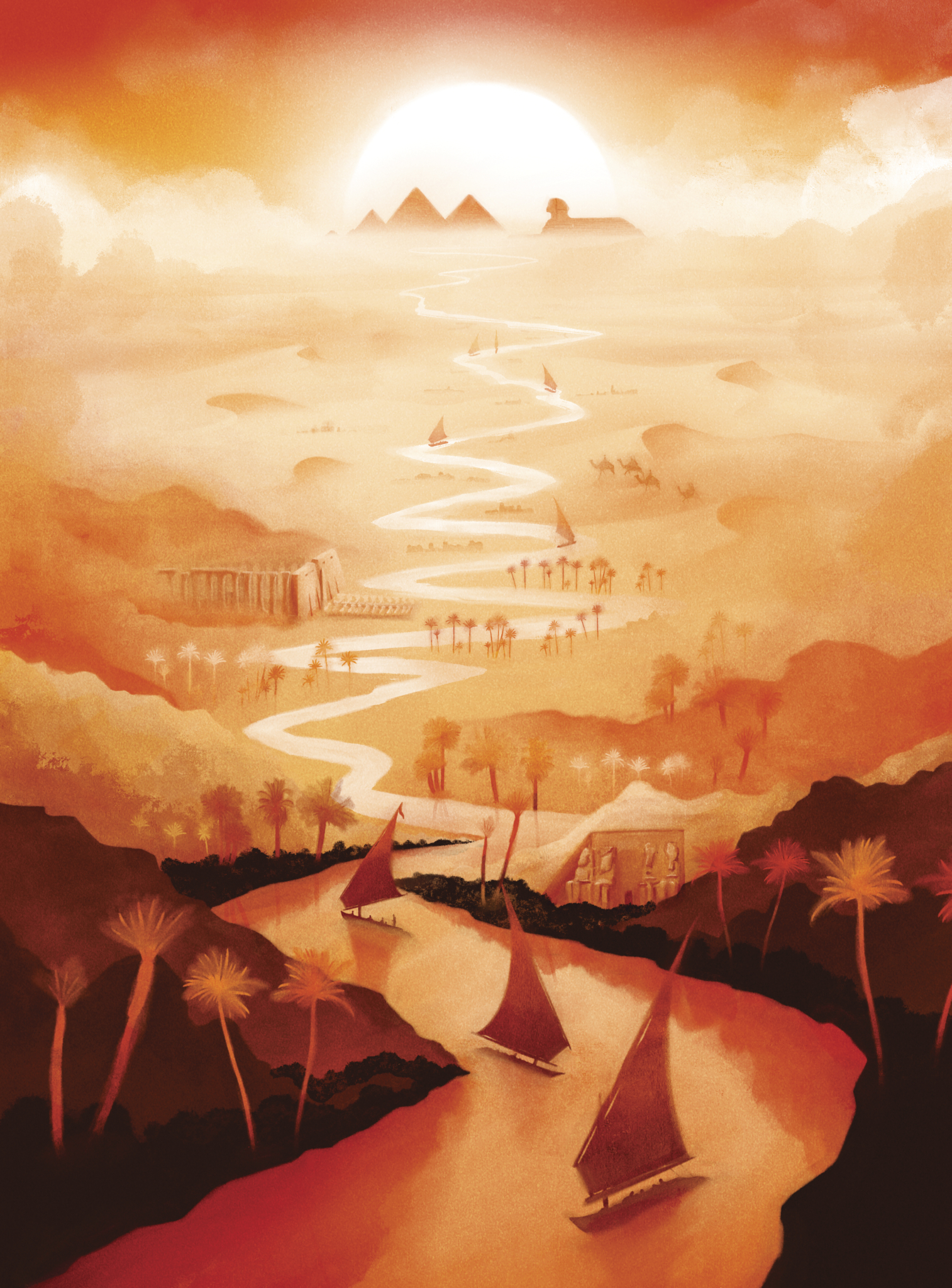
After COVID confinement had limited her travel pretty much to the mailbox, my wife, Diane Friday Begala, BA ’82, MBA, MPAff ’85, Life Member, thought the email was heaven-sent. Since she has been very involved with the alumni association and serves on the Scholarship Advisory Committee, the Exes asked if she’d be interested in leading a trip of Flying Longhorns to Egypt in January 2023. Of course, she jumped at the chance.
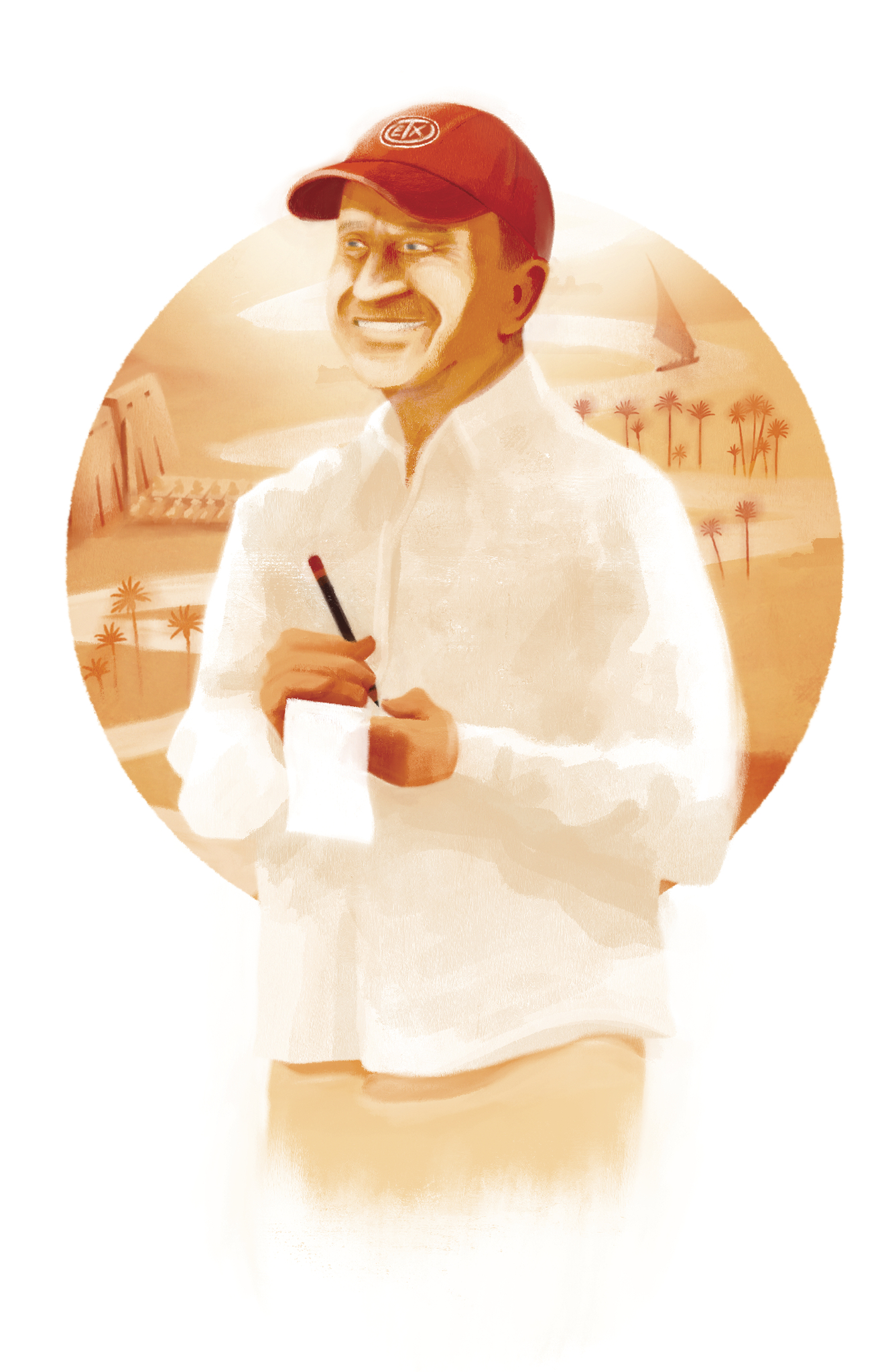
Then came her first difficult decision: who to be her Plus One. After much begging, I won out. Her job was to be the link between the travelers and the Exes, and to make sure everyone was enjoying themselves—kind of like Julie, the cruise director on The Love Boat. My job was to carry the backpack she’d stuffed with Tylenol, Imodium, Band-Aids, energy bars, and guidebooks. In other words, what I’d been doing on every family vacation for 30 years.
The only other duty the Plus One had was to take notes. After years in the media, I loved reporting this story. What follows is a distillation of my notes, taken in real time, as Diane and the Texas Exes allowed me to take the trip of a lifetime.
January 4
Cairo
What an intrepid collection of travelers! At our welcome reception on Thursday evening, Diane asked each Flying Longhorn to name a place they had been to that they would like to recommend to the rest of us. The answers were thrilling and gave each of us a severe case of wanderlust—what the kids call FOMO.
We heard from folks who have hung out with penguins in Antarctica; motorbiked through Southern Thailand; saw millions of wildebeests cross Tanzania and Kenya in the Great Migration with prides of lions hungrily looking for a meal. Others told us of trips to Morocco, Israel, and the Czech Republic. This was a band of brave hearts, if ever there was one.
The Egyptian Museum was our first stop. As we would be throughout the trip, we were guided by our own personal Egyptologist, Mohammed Osama, a man with a booming voice and a penchant for detail.
Some of the highlights of the Egyptian Museum included: A colossal statue of King Amenhotep and Queen Tiye; the Narmer Palette, a remarkably well-preserved, 24-inch piece of carved siltstone, its ancient hieroglyphics represent King Narmer first uniting North and South Kingdoms in 3200 B.C.; and the statue of Ramses II. That’s 5,200 years ago. Tough for me as an American to wrap my head around. I think the Hole in the Wall on the Drag is ancient.
And finally, King Tut. That famous golden mask does not disappoint. The colors are vibrant. The details are remarkable. The gold is radiant.


From left, painted limestone head from an Osiride statue of Queen Hatshepsut; entering the burial chamber of King Teti.
January 6
Giza
Our tour director, Ashraf Masoud, led us to King Khufu’s Great Pyramid. Mohammed explained that the pyramids were completely solid except for the burial chamber. Each side of the Great Pyramid is 755 feet at the base. Its original height was 480 feet, but it’s now 450 due to sinking and the removal of the point at the top.
About half of our group crouched, crept, and crawled into the burial chamber. Others dodged the vendors outside. A few bought scarves, three for $25. The vendors, we agreed, were persistent but pleasant; far more polite than in, say, Rome. My personal favorite was a guy, surrounded by cheap Chinese-made trinkets he was selling. “Want some junk?” he called out cheerily. I didn’t stop to buy anything, but I gave him a smile for free.
Mohammed said the Sphinx was carved on the spot from bedrock at the quarry used for the pyramids. He is 250 tons but looks good for a big-boned guy. Definitely an offensive lineman.
We rode camels because, y’know, we would expect Egyptians visiting Texas to mount up on a horse. I know it sounds touristy—and it is—but when else are you going to be able to ride a camel around the pyramids? (Lost weekends in Vegas don’t count.)
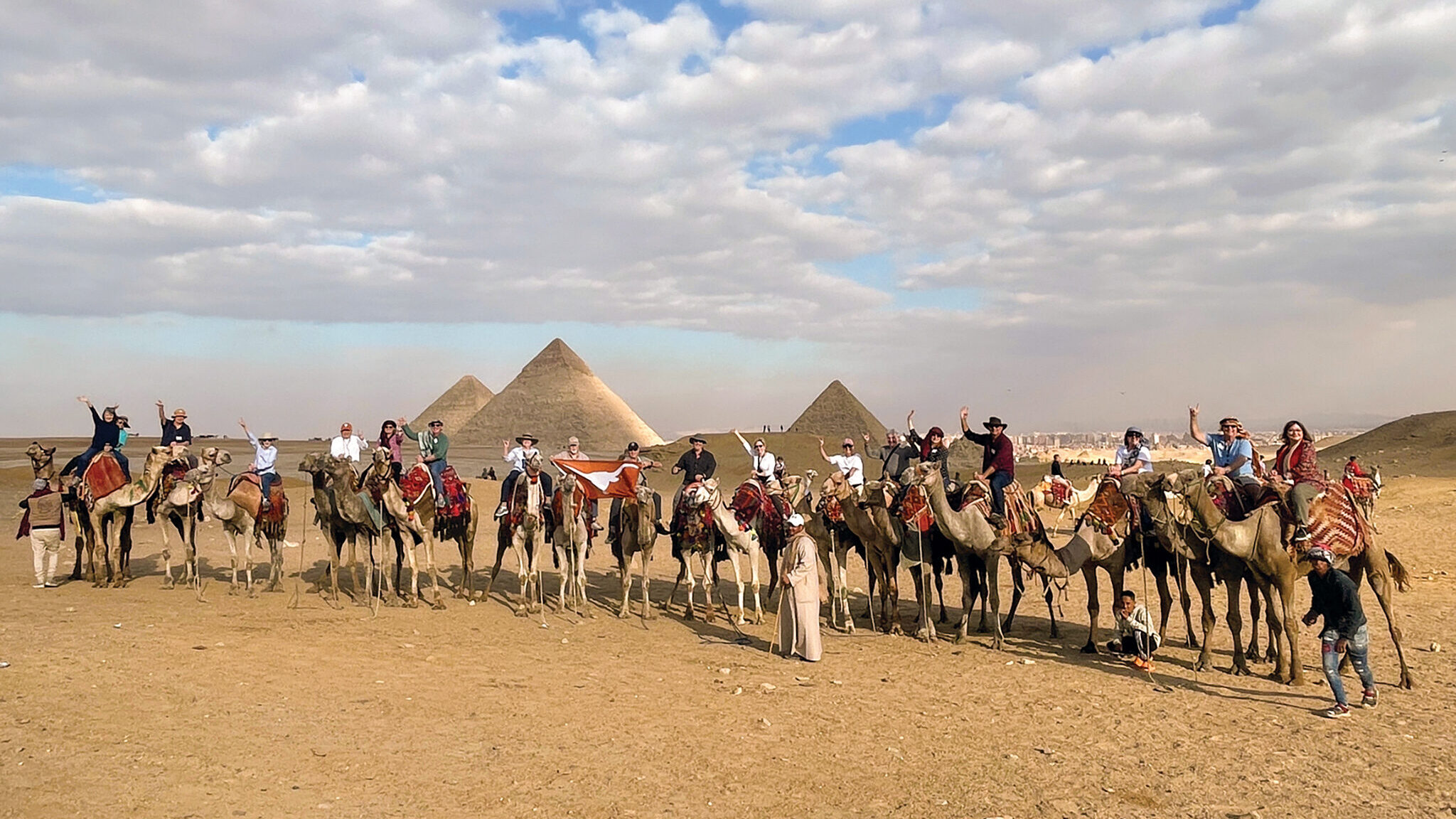
January 8
Luxor
We gathered in the lobby of the Four Seasons Cairo at 3 a.m. At one time, 3 a.m. was an hour to be coming home, not departing. But such are the benefits of age and wisdom. For now, 3 a.m. is early, not late.
Group travel is different from flying solo. You definitely sacrifice the freedom of, say, sleeping in on a whim. You’ve got to stay on schedule. But the upsides are massive: Every possible logistical detail is taken care of. Your bags are whisked away, your luxury motorcoach awaits, your tickets for the museum are handed to you, as is your boarding pass for your next flight. We never stood in a single line for a single minute. Beyond that, we bonded as a group. The early mornings, the hiking over ancient, rocky terrain, the inside jokes. Soon we were swapping tales from our college days, offering tips for future trips, making plans to meet up back home. We were a unit. Because our trip was called “Legends of the Nile,” we dubbed ourselves “The Legends,” and our trip truly was legendary.
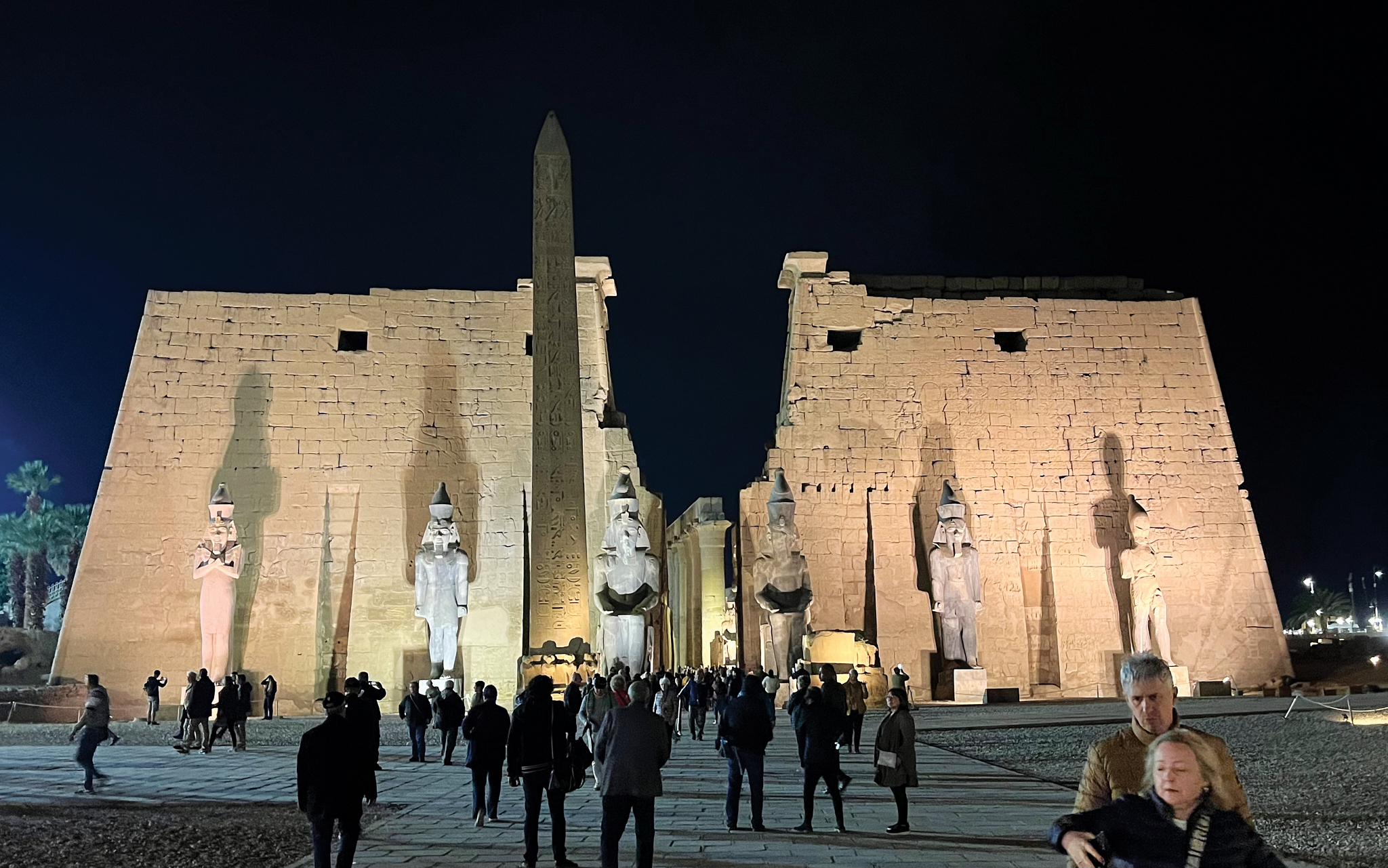
Thanks to that 3 a.m. start, we were the first people to enter the Luxor Museum that day. It is humbling to have the place to yourself. With the gift of time and without the curse of crowds, we perused the scores of artifacts and works of art, among them: the colossal, polished granite head of King Amenhotep III, husband of Queen Tyie and grandfather of King Tut; a magnificent statue of Thutmose III—the detail is exquisite, and very difficult to achieve when carving in hard stone; and the two royal mummies of Ahmose I and Ramses I.
We boarded two feluccas, traditional sailing vessels on the Nile, and cruised all 4,132 miles of the timeless river. OK, maybe I am exaggerating. But we sailed a mile or so, saw a spectacular sunset, and thanked our lucky stars to be Flying Longhorns. Seeing the sun set on that river, Diane smiling in the glow, took me back to another sunset on another river: sitting on the roof of the Dry Creek Saloon watching the sun go down on Town Lake the night in 1988 when I proposed to her. I’ve been a grateful Plus One ever since.
We ended the day with one of the most amazing experiences any of us has had: a nighttime visit to the Temple of Luxor. We walked along the Avenue of Sphinxes—about 2 miles of ancient sphinxes beautifully illuminated with modern lighting. Then, at the temple, we gazed and gawked and gawked and gazed until our gazers and gawkers gave out.
Over the centuries, this place has housed devotees of various Egyptian deities, as well as Christians, Muslims, and Jews. The colossal statues (and when I say colossal, I mean it: 65 feet tall. To put that into perspective, there is only one statue in all of Texas that big, Huntsville’s Sam Houston, and there are literally dozens of these behemoths in Luxor). The vivid colors, the limitless horizons of wealth and beauty, they make you stop and think. These antiquities have stood the test of time. Each of us had a profound experience. All of us came away thinking that we now know why the word “awesome” was invented.
January 9
Valley of the Queens
We began our visit to the Valley of the Queens with what Ashraf called, “the highlight of the highlight of the highlight of the highlight”: the Tomb of Queen Nefertari. (To be fair, he said that about every stop. His hyperbole resonated well with a group of Texans, for whom bragging is an art form.)
Each painting of her was a fashion statement of what she and Ramses thought was beautiful. In all of them she is rail thin. She is wearing multiple outfits, including a leopard-skin print. But wait, that probably wasn’t a print. It was probably the skin of an actual leopard. Her hair, clothes, makeup, jewelry, all were setting a standard for fashion and beauty that still works today. Nefertari is an eternal Instagram influencer.

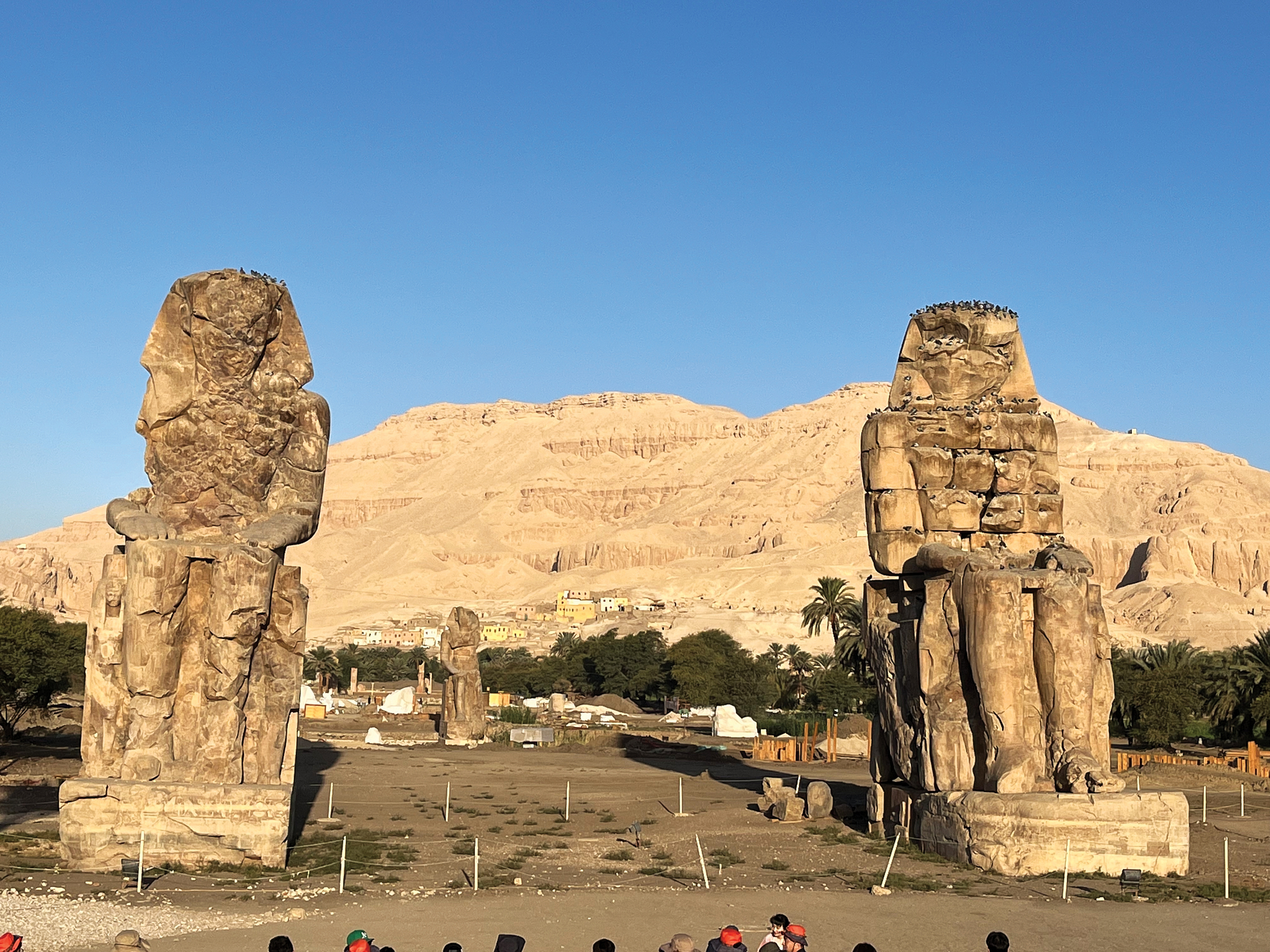
A longhorn in the tomb of King Seti I in the Valley of the Kings; the Colossi of Memnon near Luxor.
Tomb of Tutankhamen
Howard Carter “discovered” Tut’s tomb in 1922. He had been searching for 16 seasons, and in September 1922, his patron, Lord Carnarvon (whose family estate, Highclere Castle, is the setting for Downton Abbey), said he was going to cut off Carter’s funding at the end of the year if he had not found the tomb. Within a month, Carter “discovered” it. Really. I mean, what are the odds?
Tut’s tomb is a fraction of the size of the major tombs we visited. Kind of a starter tomb, it seems. What makes it special is that it is the only tomb found with its treasures (mostly) intact. This is because another tomb was dug above it, obscuring any approach to it. So, Tutankhamen’s obscurity led to his fame. Very Zen.
January 10
Cruising the Nile
For four days we cruised the Nile aboard a luxury ship. Some in our group were veteran cruisers. Others, like yours truly, get seasick in the bathtub. Not here. The boat ride is smoother than a baby’s bottom, and the scenery along the Nile is breathtaking. Camels grazing along the bank. Children calling out to us. It reminded me of road trips on I-10 in mom and dad’s Chevrolet Kingwood Estates station wagon, when we’d try to get truckers to honk their horns and cheer when they obliged us.
But kids weren’t the only locals trying to get our attention. Intrepid men in rowboats pulled up beside us, tied onto our cruise ship and began calling to us. Their tiny boat was stuffed with textiles: tablecloths, wraps, dresses, scarves and the like. We stood on the top deck, at least 45 feet above the water, laughing in amazement as the tiny rowboat hugged our ship. The men had folded their tablecloths and other wares in plastic bags, which they hurled up to the sundeck with pitching arms that would make Roger Clemens envious. Let the games begin. Multiple games, actually. The most important was “Let’s Make a Deal!”


Vendors tossing wares up to the sundeck from below; the captain piloting the ship from the bridge.
“Two thousand!” the men would yell. (That’s in Egyptian pounds. The exchange rate is about 27 Egyptian pounds to one U.S. dollar.) “Two hundred!” we’d yell back. And on it went. All the while the men were pitching more and more stuff up at us, allowing us to shop for the size, shape, and style we wanted. The deal would conclude with a passenger putting their money in one of the bags, along with a tablecloth no one wanted, and tossing it down to the men. Many of us got Egyptian textiles; each of us got a great story.
January 11
Kom Ombo
For the first time on this trip, we heard the name Cleopatra. Her image is etched into the temple wall here. She has large, lovely eyes and a sweet smile. Our guide gave us a quick history lesson. There were, Mohammed said, actually seven queens who were called Cleopatra. The seventh was the daughter of Ptolemy XII. She married Ptolemy XIII. Meanwhile, the Roman Empire was ascendant. In Rome, Pompey fell out with Julius Caeser and fled to Alexandria. There, Pompey declared that Cleopatra and Ptolemy XIII were under his protection. But he didn’t have much protection to offer, because Caesar attacked Pompey in Alexandria, sank his ships, and killed him.
Caesar came to Alexandria and ordered that Cleopatra and Ptolemy XIII be killed. According to legend, Caesar fell in love with Cleopatra. Rather than being executed, Ptolemy XIII and his dear, devoted wife Cleopatra came to Rome. Well, that’s not entirely accurate. The couple actually departed Alexandria for Rome. But, Mohammed said with a wink, only Cleopatra arrived. It seems Ptolemy died on the trip. Then she fell in love with Caesar and had his baby—but we all know what happened to Caesar. Apparently, it was bad luck to be Cleopatra’s Plus One.
January 12
Abu Simbel

Rising majestically on the water’s edge, Abu Simbel looks like something out of a movie. And it is. Death on the Nile and other films take place here. But before it was a movie set, it was the scene of two temples, commissioned by Ramses II for himself and his queen, Nefertari. In front of the Temple of Ramses II, four gigantic, 70-foot-tall statues of Ramses attest to the wealth and power and engineering prowess of the Egyptians.
Can you imagine how impressive to Egyptians, how intimidating to outsiders, those monstrous statues must have been? If you were sailing down the Nile, thinking of attacking Egypt, you’d see Abu Simbel, turn around, and head for home.
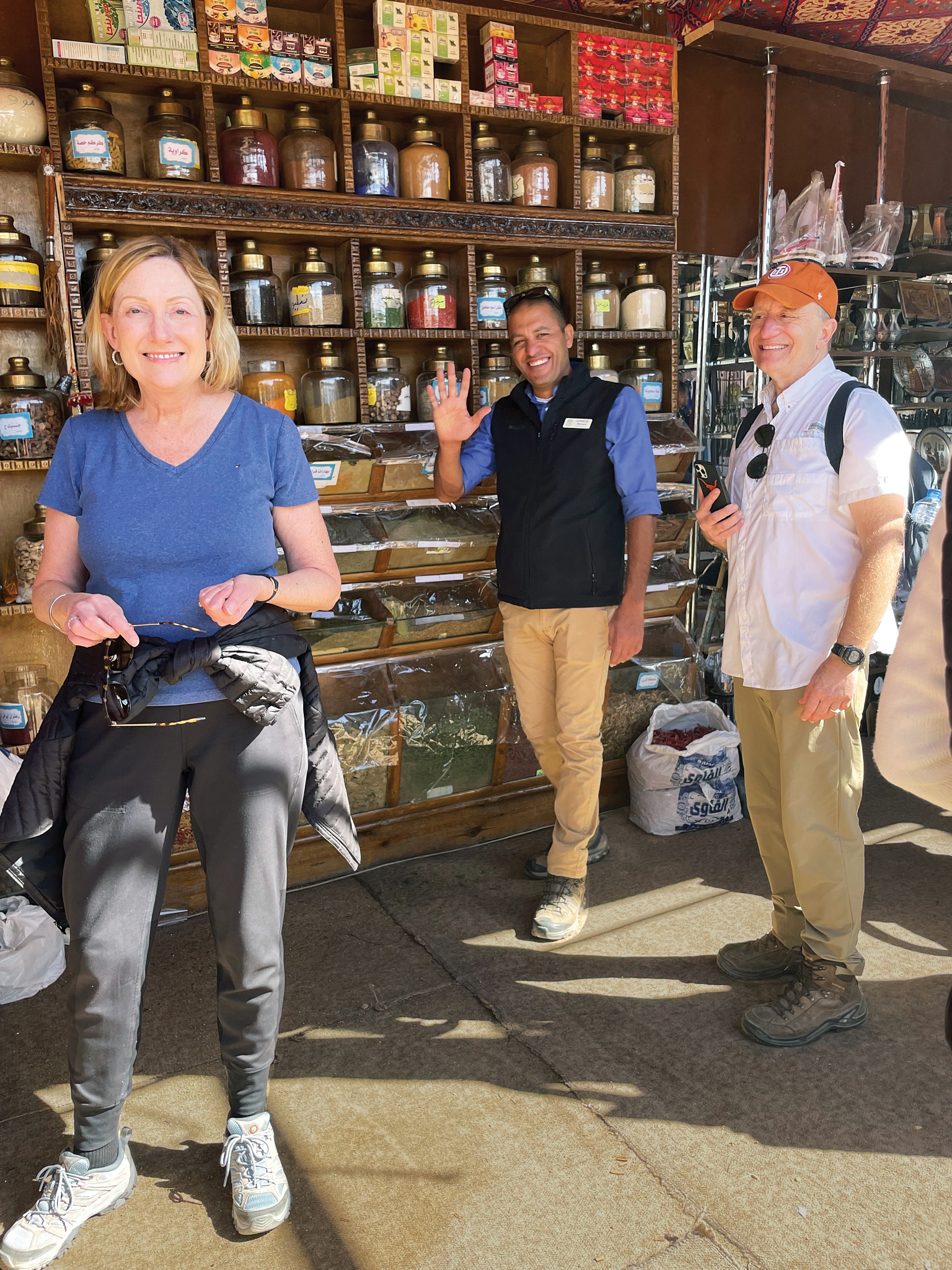
Inside Ramses’ temple, more intimidation. Paintings of Ramses in multiple heroic poses: killing his enemies, shooting his bow from a chariot, with a pet lion, etc. And as if that weren’t enough, Nefertari’s temple next door has three more colossal statues of Ramses—and only two of Nefertari. Such is the lot of the Plus One, I suppose.
January 13
Heading Home
We concluded the trip with a lavish Egyptian banquet in Cairo. We laughed, hugged, and headed for home; enriched by the experiences we had, the wonders we saw, and the friends we made. Each of us now has hundreds of pictures and, more importantly, a trove of travel stories to give our friends a severe case of FOMO.
Paul Begala, BA ’83, JD ’90, Life Member, Distinguished Alumnus, is a political analyst for CNN.
CREDITS: Illustrations by Sam Brewster; Courtesy of Paul Begala; Diane Begala; Ashraf Masoud; Marion McCoy






